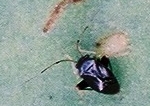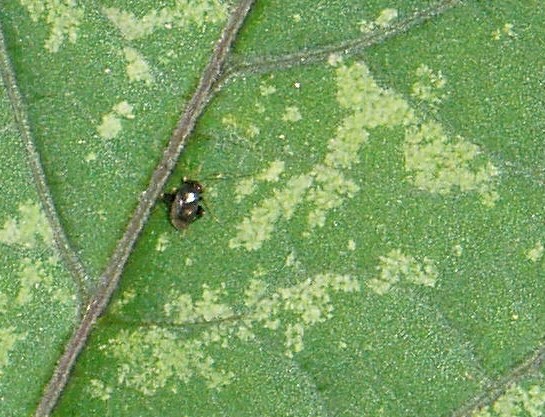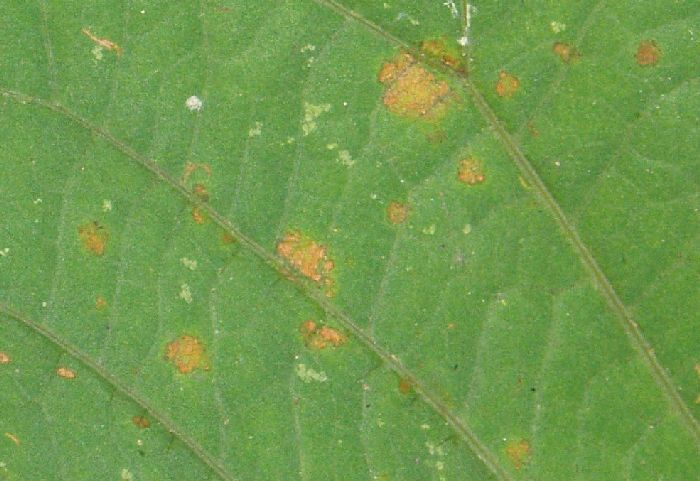|
|
Class |
Insecta |
|
Order |
Hemiptera |
|
Family |
Miridae |
The
jumping plant bug is not a serious sweetpotato pest.
Common in the Philippines and PNG. Probably widespread in Asia and the
Pacific.
Adults and nymphs suck the sap of the
leaves producing white stipplings or irregular-shaped marks on the surface. Usually these
are in scattered clusters across the leaf. Young nymphs may feed in a
small area producing roundish spots, which may appear rusty brown on some
cultivars.
Adult.
The adult is black or dark
brown with 2.1 mm body length.
The antennae are long and slender with the second segment four or more times
longer than the first segment. The tips of the antennal segment three and
segment two are light brown. The terminal antennal segment
is dark brown.

Crops in the family Leguminaceae (legumes or pulses) are important alternate hosts.
There is no information on the control of jumping plant
bug in sweetpotato. Control is generally not necessary.
Amalin, D.M.
and Vasquez, E.A. 1993. A handbook on Philippine sweet potato pests and
their natural enemies. International Potato Center (CIP), Los Baņos,
Philippines. 82 p.
Contributed by: Erlinda
Vasquez,
Vilma Amante
and
Jane O'Sullivan
|
Taxonomy
Economic
importance
Geographical
distribution
Damage
Morphology
Host
range
Management
Reference

Feeding
punctures (stipplings) caused by jumping plant bugs (E. Vasquez).

A jumping plant bug and the white marks (stippling)
produced by their feeding (J. O'Sullivan).
 Nymphs
feeding in a localized area cause browning in some sweetpotato
cultivars, resulting in rusty-looking spots (J. O'Sullivan). |

